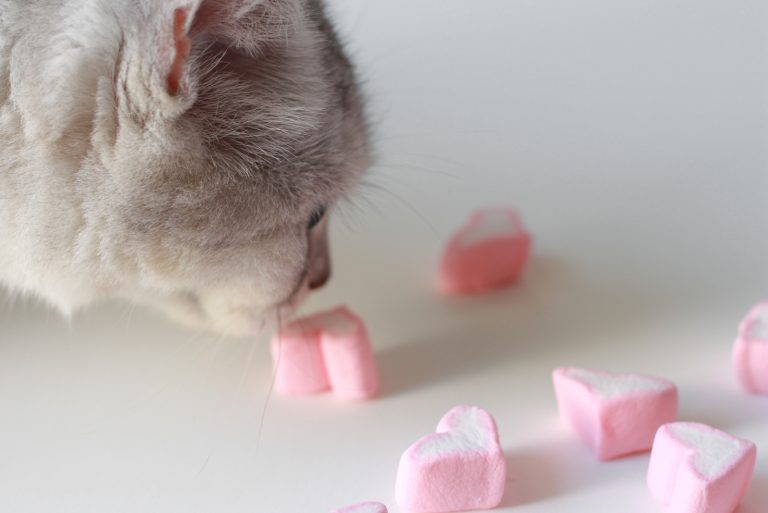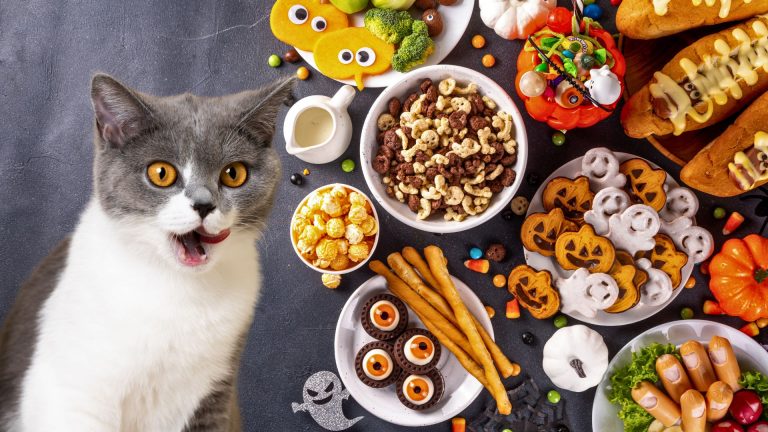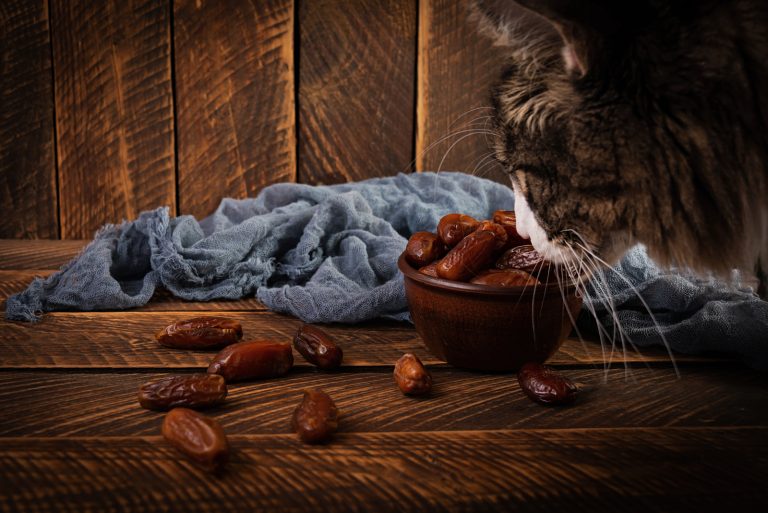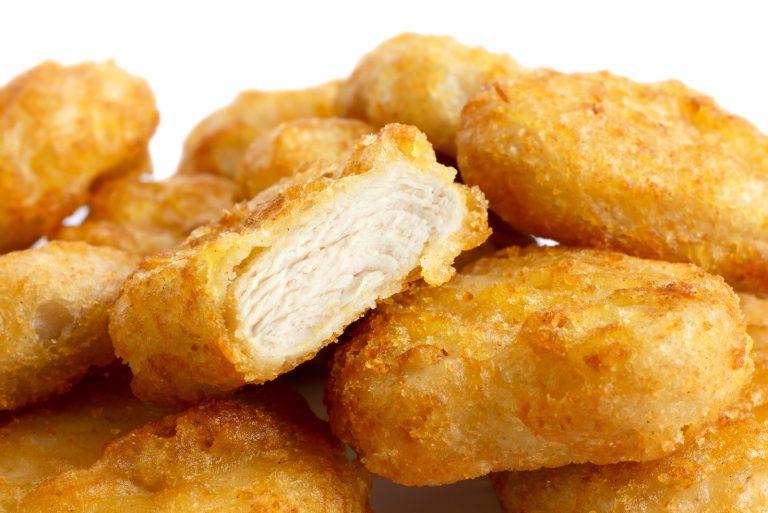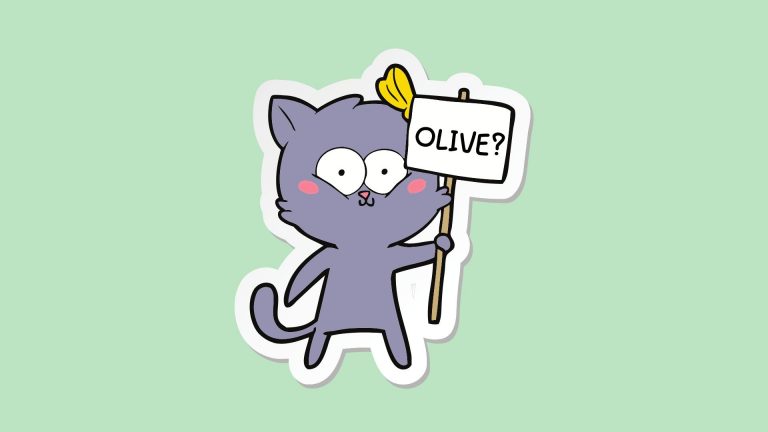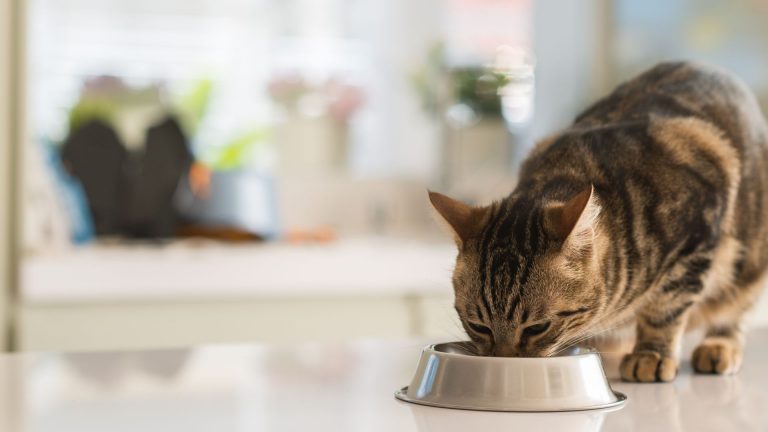Can Cats Eat Whipped Cream? This Is What You NEED To Know
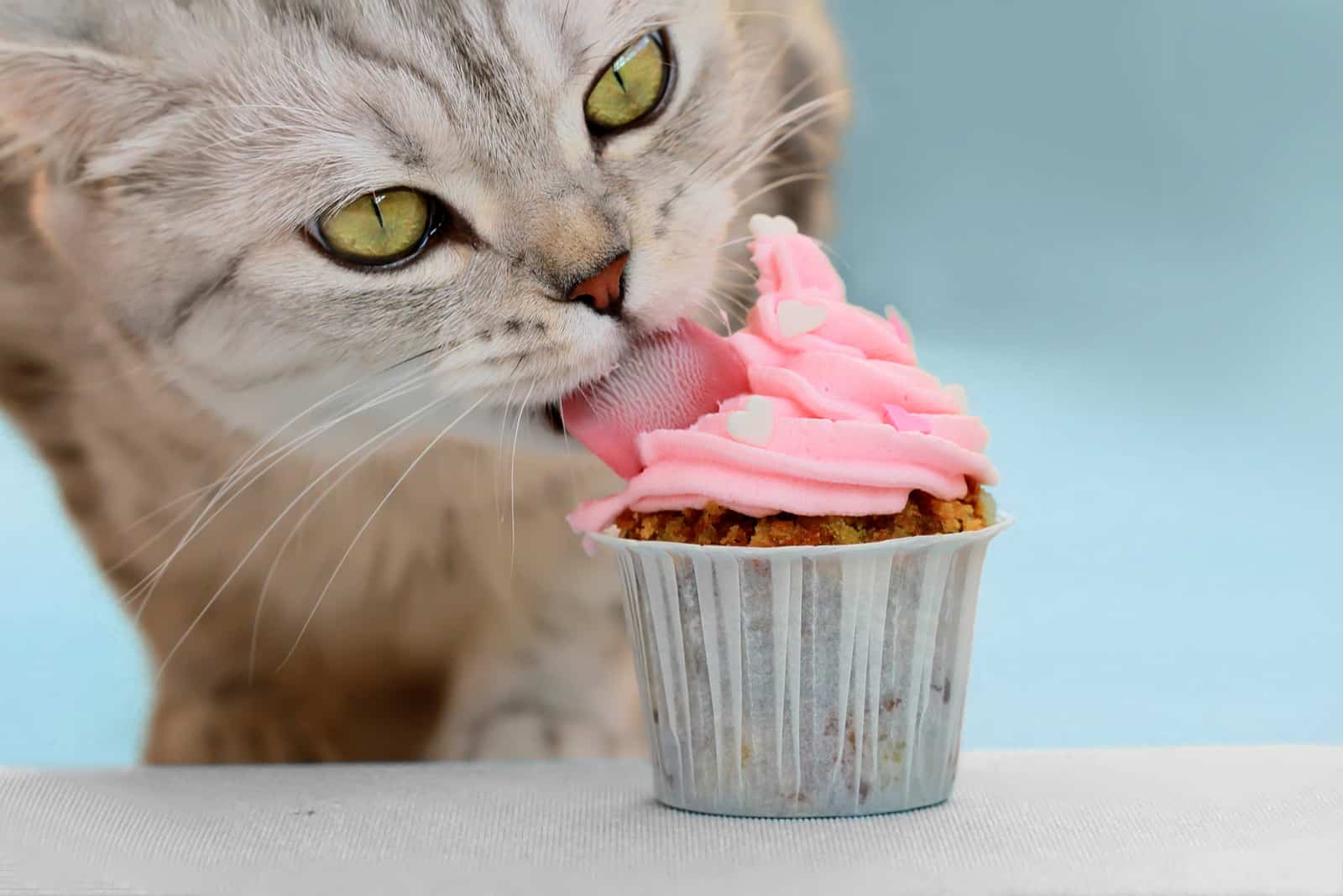
We all know that cats absolutely love treats! As cat lovers, we want to make our pets happy. Unfortunately, not all food items should be given to cats, as you probably already know.
If you’re wondering Can cats eat whipped cream? and looking for a direct and quick answer, here it is – Yes, they can eat it, but they should not!
This question requires a more detailed answer and this is provided below, but let’s start with the basics first, in order to give you a full understanding of the topic.
Can Cats Eat Whipped Cream?
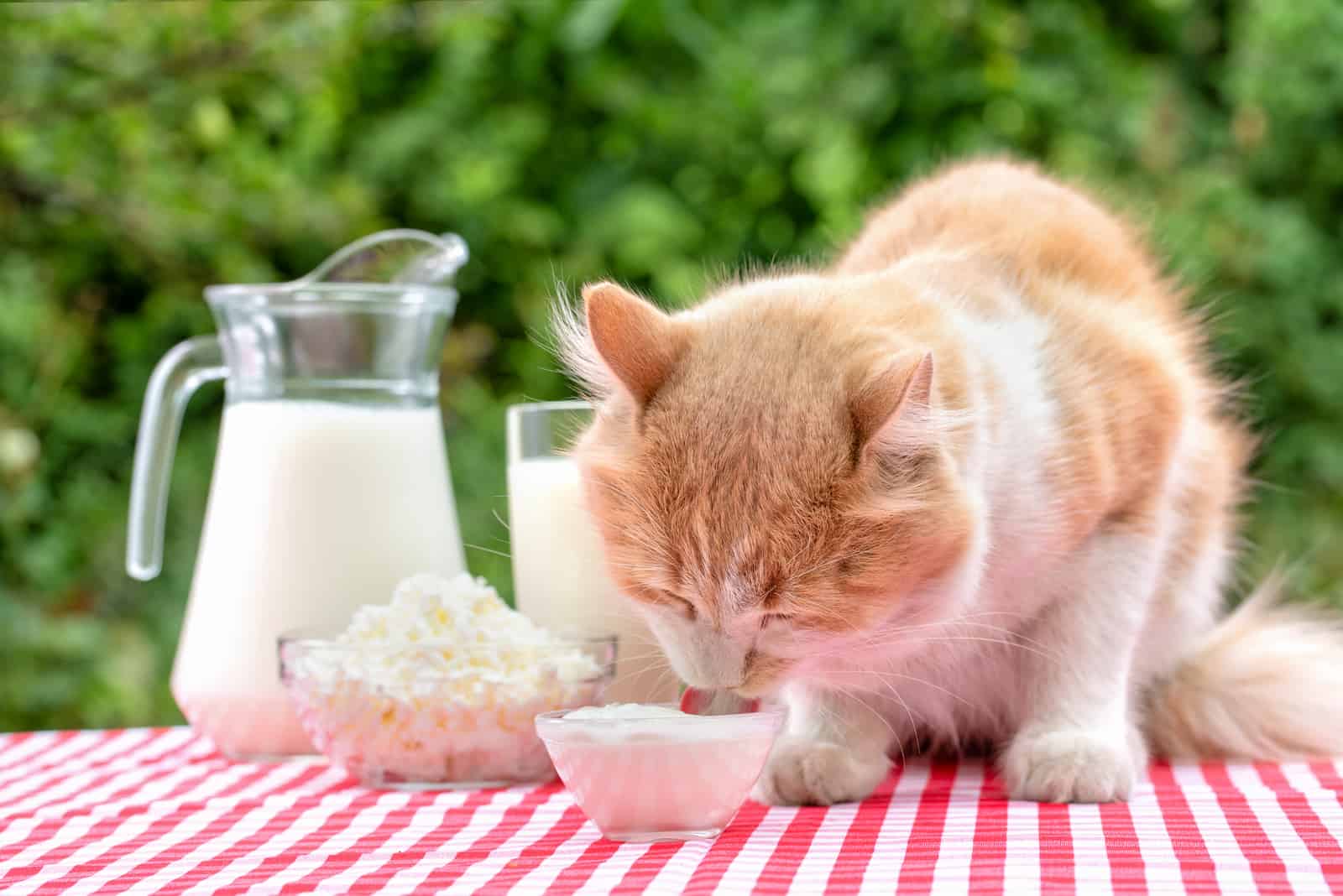
Technically, they can – but that doesn’t mean they should!
Cats are obligate carnivores and their diet should consist of mainly meat-derived proteins and a healthy level of fats, with minimal carbohydrate intake.
You can also give your cat small quantities of leftover human food such as tuna, sardines, bananas, carrots, and oatmeal (among many others).
One thing is very important: All cat food should be dairy free. This is due to the fact that most adult cats are lactose intolerant.
There is no room for:
• Cow’s milk
• Ice cream
• Cheese (in large amounts – a tiny bit is fine)
• Heavy cream
• Any other kind of milk products
I hate to break it to you, but whipped cream contains dairy! So that is another thing for our list of forbidden foods:
• Whipped cream
Extra tip: If you want to learn more about the effect of milk on cats, I suggest reading: Do Cats Like Milk? Truth Or Myth?
What If My Cat Eats Whipped Cream?
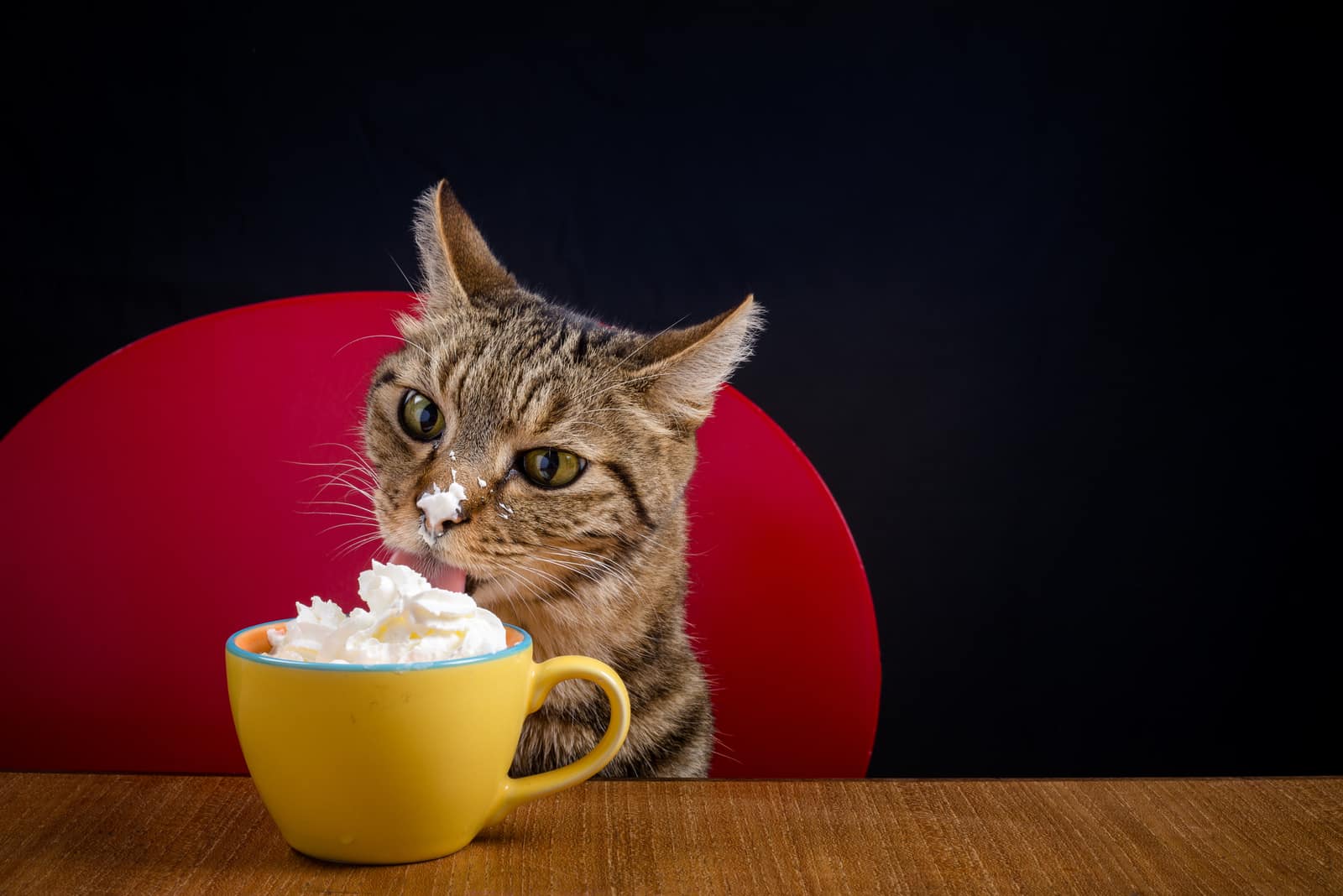
Maybe you or your friend accidentally gave your pet some whipped cream or, under some strange circumstances, your pet found some whipped cream laying around. Now you’re wondering Can cats eat whipped cream and What will happen if they do?!
The answer to this question really depends on two factors – the amount of whipped cream consumed and your pet’s tolerance level to lactose.
If Your Cat Eats A Small Amount
• If your cat is moderately lactose intolerant, it may be more gassy than usual, but everything will be okay.
• If your cat is highly lactose intolerant, even a small amount of whipped cream will probably lead to vomiting and diarrhea.
• Prolonged and regular intake of small amounts of whipped cream will cause long-term tummy issues because of the accumulated effects of sugar, dairy, and vanilla – which are not healthy for cats!
If Your Cat Eats A Large Amount
Eating a large amount of whipped cream (and dairy in general) is very likely to lead to digestive issues such as:
• Bloating
Bloating causes a swollen tummy. This is a result of the digestive issues your cat is experiencing.
• Flatulence
This is a build-up of gas in a cat’s digestive system. It causes great discomfort or pain for your cat and will cause your cat to pass much more gas than usual..
• Diarrhea
This is by far the most common symptom of lactose intolerance. It usually occurs around eight hours after eating. This means lots of visits to the litter box for your cat and a lot of cleaning for you!
• Vomiting
This is another tell-tale sign of lactose intolerance. If this is one of your cat’s symptoms, there really isn’t a lot you can do except keep them hydrated. But don’t worry, it will definitely pass.
• General feeling of discomfort due to an upset stomach
If you see your pet feeling down for a day or two, a food reaction is a very possible reason. It all comes down to cats not having enough of the right enzymes to digest the large amount of lactose they have ingested.
What Is Whipped Cream Made Of? Hint: Bad Stuff
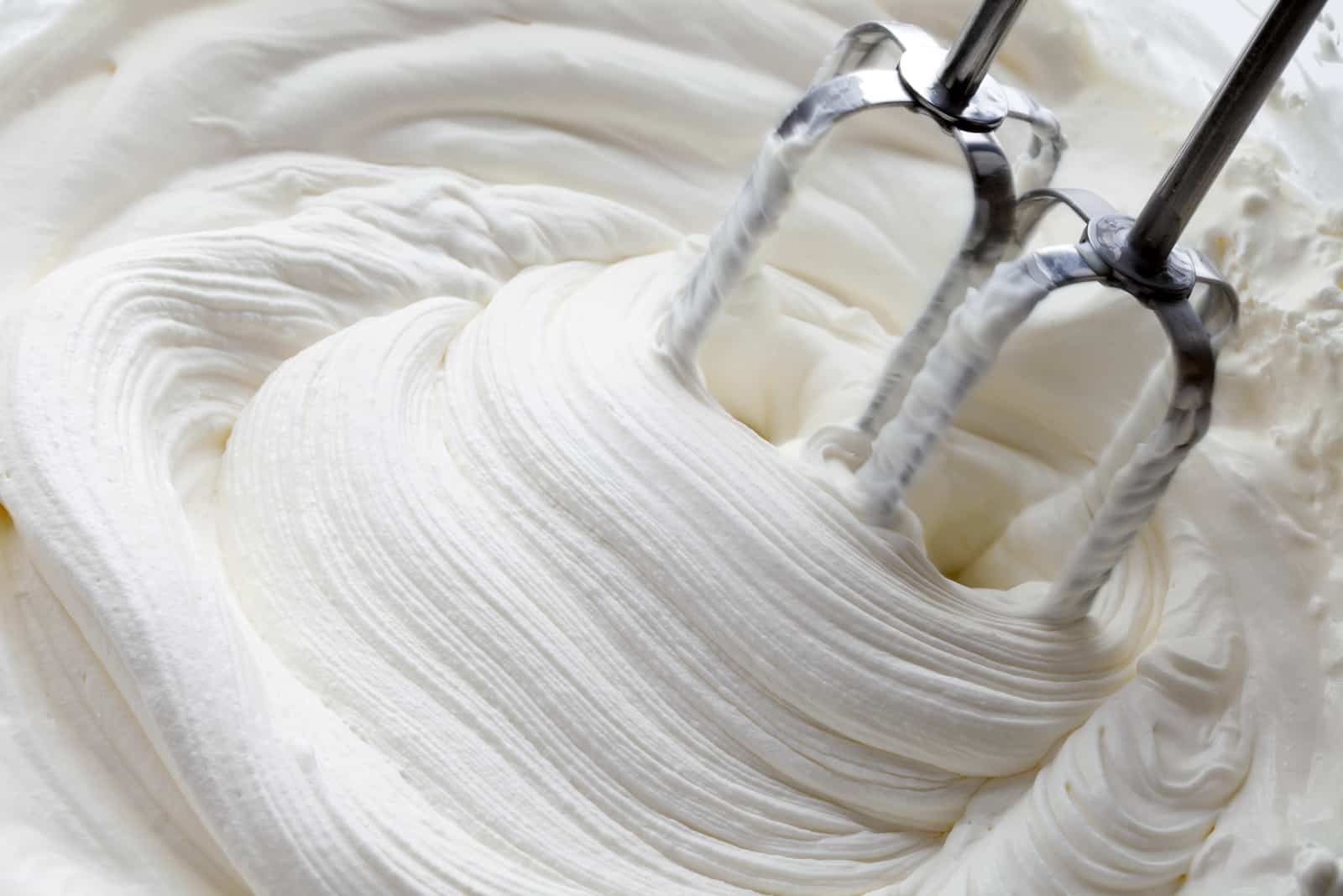
I am sure you don’t want to see your furry friend in any kind of pain or discomfort. Unfortunately, some food ingredients can cause digestive upset, so make sure to watch out for what is in your pet food.
Okay, let’s be real – whipped cream is absolutely not the worst thing you can give your cat. There are food items that are much more dangerous for your cat’s health.
But unfortunately, whipped cream does contain almost a dozen harmful ingredients for cats.
Lactose
As you probably already know, adult cats should have a dairy-free diet due to their lactose intolerance. Lactose does not sit well with your cat’s digestive system, so it is best to avoid it as much as you can.
Cats And Lactose Intolerance
Lactose is a sugar found in dairy products, including whipped cream. In order for their digestive system to process it, it needs an enzyme called lactase.
In kittenhood, cats have enough of this enzyme in order to digest lactose they obtain via their mother’s milk. As cats get older, their system slowly stops producing this enzyme.
This means that most adult cats cannot ferment a large amount of lactose. Therefore it should not be given to them.
On the other hand, kittens do have enough of this enzyme and they can degrade lactose, but there are other reasons as to why they should not have whipped cream and this will be explained further in this article.
A Lot Of Sugar
Sugar is not necessarily toxic for cats but it is very unhealthy. You’ve never seen someone give their pet a bar of chocolate or a little bit of corn syrup, right? There is a reason for that.
Common symptoms of high blood sugar include vomiting and diarrhea. Regular consumption of sugar for an extended period of time can lead to weight gain, diabetes, and tooth decay – we don’t want that.
Suggested Read: Can Cats Eat Honey? Health Benefits And Side-Effects?
Artificial Sweeteners
These are not toxic to pets and they are used as an alternative to sugar in many foods nowadays. However, not being toxic isn’t the same as being perfectly pet safe.
Many of these sweeteners have been reported to cause an upset tummy in many cats, especially if eaten in large amounts.
Extra info: Artificial sweeteners are found in many other sweet treats. If you like to give your cat marshmallows, I highly recommend reading Happy Whisker’s article on can cats eat marshmallows in order to learn more about artificial sweeteners in this potential cat treat.
High Fat Content

Fat is essentially a compact storage of energy – meaning it contains a large amount of calories. One gram of fat contains more than twice as many calories as a gram of carbohydrate.
High-fat food can eventually lead to your cat gaining weight, which is a serious problem. Obesity is not something that should be taken lightly, and pet owners need to work to prevent it from happening.
Related: How Heavy Should My Cat Be: Weight Guide
Nitrous Oxide
Nitrous oxide, also known as “laughing gas“, is a key component of whipped cream. Without it, whipped cream as we know it would not exist.
When you start spraying, the dissolved nitrous oxide bubbles up and creates the fluffy texture of the whipped cream.
There are some side-effects of nitrous oxide that your cat might experience when eating a large amount of whipped cream, including dizziness and nausea.
Vanilla Extract
Vanilla-flavored food items are perfectly safe for your cat to eat.
The problem is vanilla extract, which contains at least 34% ethyl alcohol.
Alcohol is very toxic to cats and even a minuscule drop can lead to alcohol poisoning. The same amount would barely register with us humans, but a cat’s body is so much smaller than ours and their system is not equipped to process alcohol. This means that alcohol has a much greater toxic effect on them.
Of course, a small amount of whipped cream won’t contain a fatal dose of vanilla extract. But better safe than sorry, right?
You might also find this article interesting: Can Cats Eat Jello? Here’s What You Need To Know
Hydrogenated Oils
These are practically unavoidable in the modern world. Hydrogenated oils are used as food preservatives (they increase the shelf-life of food items) and enhancers of flavor and texture.
Hydrogenated oils contain trans fat, proven to increase levels of LDL – “the bad cholesterol“ and decrease levels of HDL – “the good cholesterol“.
Carrageenan
This is a seaweed extract, very commonly used in the food industry as a thickener and stabilizer. It is found in a surprising range of foods so it can be quite hard to avoid.
There is mixed evidence about the safety of carrageenan in a cat’s diet. Some sources state that it is perfectly safe for cats while others report carrageenan as a highly inflammatory substance for their digestive system.
Considering the potential hazards, why not avoid it if you can?
Yes, Cats Technically Can Eat Whipped Cream
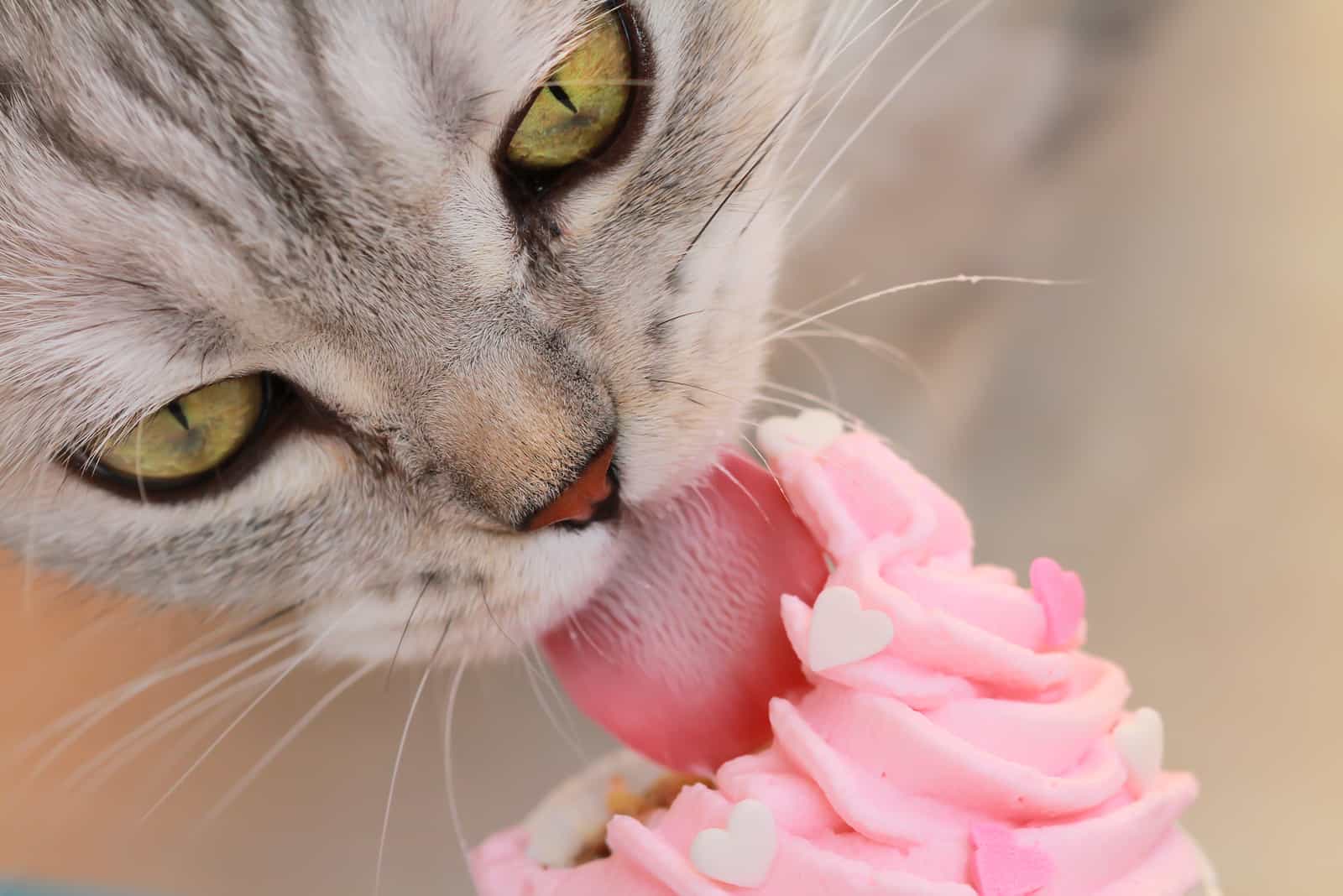
Is whipped cream safe? In small amounts – yes, it is safe. Your cat will not have major health complications from a few occasional licks of whipped cream.
If you are set on giving your feline friend whipped cream, here are a few things you should keep in mind.
It’s A Quick Treat
You want to reward your cat for being an awesome pet? You are allowed to give them a tiny taste of whipped cream. Some of them really do seem to enjoy it and it’s easy for you to give it to them – you just need to spray for a second and not be tempted to overdo it!
While on the topic of treats for your kitty, what do you think – can cats eat pancakes?
What Is A Safe Amount?
You might wonder, Well if it is not the healthiest, how much can I give my pet?
The safe amount to give your little feline friend is less than a spoonful. You can even measure it by placing a bit of whipped cream on your fingertip. That is an approximate safe amount.
It must be noted that some cats have a higher tolerance to lactose, so they can actually have a larger amount of whipped cream than just a spoonful. On the other hand, some are very sensitive to lactose, so less than a spoonful is just the right amount. It really depends on your cat.
With this being said, you can answer the next question yourself…
Can My Cat Eat A Puppuccino?
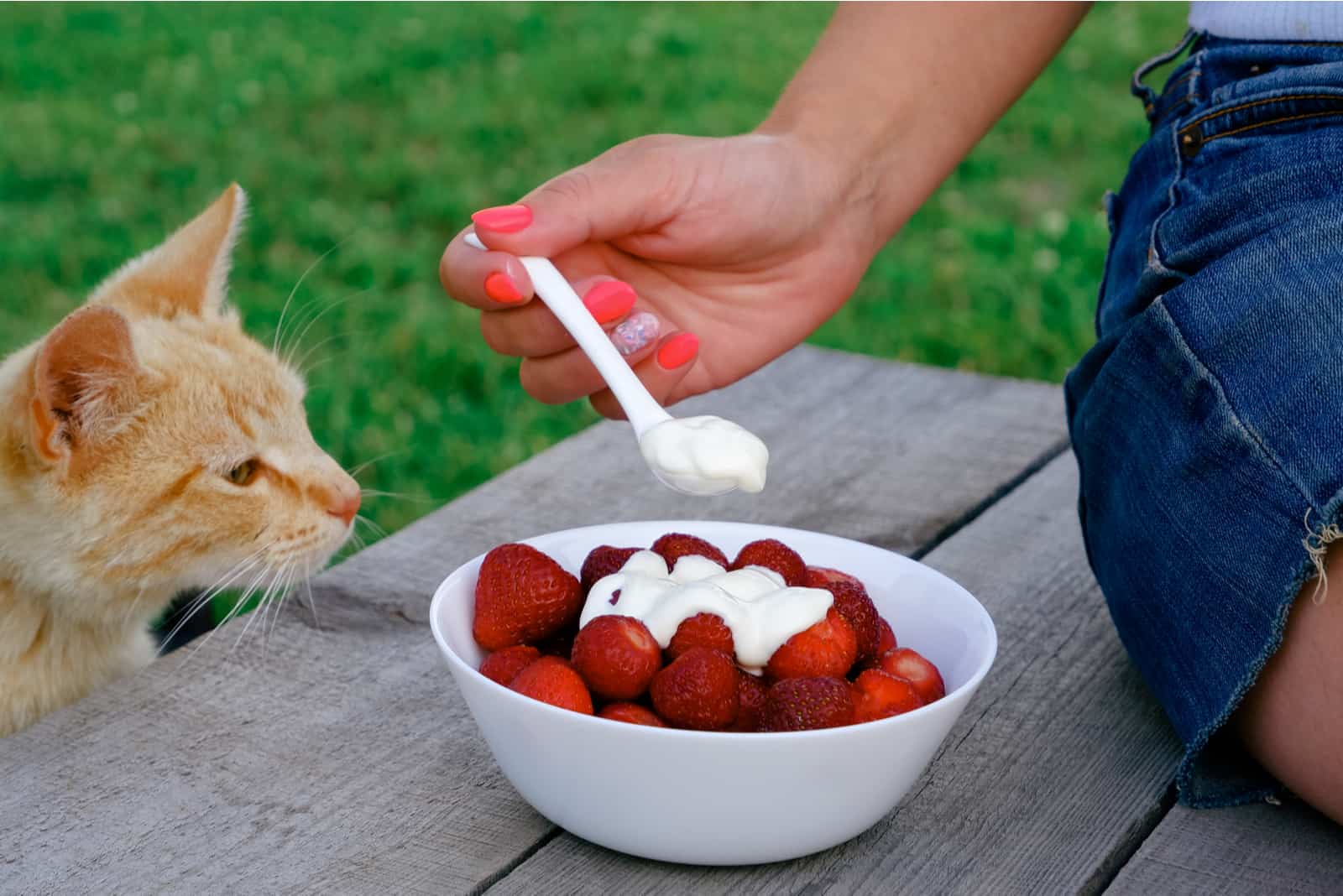
You have probably noticed a trend on TikTok and Instagram where cute dogs are given a Puppuccino from Starbucks. Truth to be told, these puppuccinos look so good and the dogs eating them are simply adorable!
However, it’s sad news for you cat owners! Considering your cat’s diet should be lactose-free, the answer is: absolutely not!
Aside from anything else, the portion size is enormous – so much whipped cream is definitely not healthy for your cat. A puppuccino is just a cup of whipped cream – this is the worst thing you could give your cat’s digestive system.!
What if Starbucks offers a lactose-free puppuccino?
Nope! It’s still not healthy. Even if we forget the lactose, whipped cream still has many other unhealthy ingredients, such as nitrous oxide, vanilla extract, a large amount of sugar and fats, artificial sweeteners, and hydrogenated oils.
Using Whipped Cream In A “Fear-Free Distraction Technique”
None of us like seeing our pets anxious or scared, especially when we feel like we can’t do a lot about it.
So, what if I said that there is a technique that can completely or partially distract your cat in a difficult situation and it involves using whipped cream?
Let’s say your cat is about to have a vaccine shot. Place a small plate of whipped cream in front of your pet and let them eat it.
Your cat will be so immersed in eating the whipped cream that it will not feel the needle at all. Your furry friend will not even flinch! I call that a win-win situation!
2 Healthy Alternatives To Whipped Cream (+ Ideas)!
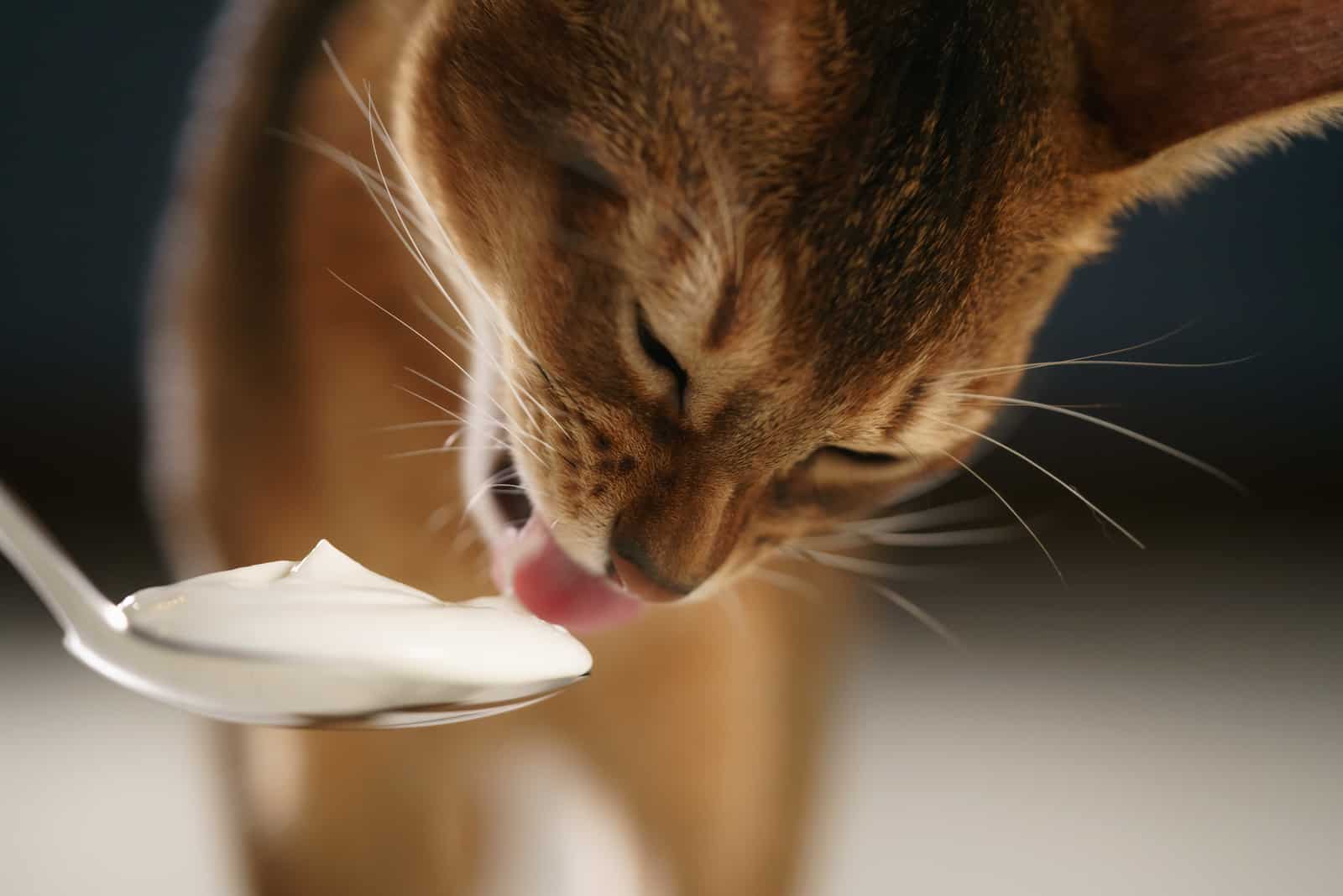
Here we list a number of foods that are perfect to use as treats. Remember – they are not to be used daily or in large quantities, just sometimes when you want to reward your pet with something delicious!
The good thing about these options is that your cat’s stomach won’t be upset, and there won’t be any potential clean-up for you later!
Cooked Meat
You can never go wrong with cooked meat. Cats are carnivores after all, and they absolutely need protein from meat to keep them going. You can make these for your cat as a treat, or give them some of yours while you’re having a meal.
Cats absolutely love:
• Cooked chicken
• Cooked salmon
• Canned tuna
Cat Biscuits
It doesn’t matter if they are store-bought or homemade, giving your cat biscuits is always going to make them happy.
Store-Bought Cat Biscuits
There are many options when buying cat biscuits and they are bound to be absolutely delicious for your cat, considering they are made to be tasty.
The array of flavors to choose from is pretty impressive – there is also a cat treat party mix! How cute is that?!
Homemade Treats
There are also cat treat recipes online if you want to try making them yourself! They are pretty simple and can have as few as two ingredients! Examples include a popular and easy-to-make carrot and catnip kitty treat, or freshly baked tuna biscuits.
Homemade treats just might become your cat’s favorite thing in the world (apart from you of course)! Good luck and have fun making them!
If you’re a true fan of cooking for your cat, you might find this article interesting: What Do Cats Like To Eat For Breakfast? Plus 3 Yummy Ideas!
In Conclusion…

A cat’s diet should be dairy-free, so whipped cream can only be a very rare treat. This is because it does not add anything positive to your cat’s health and in large amounts can cause health issues..
I know it may seem like a very simple treat you can give your cat, but there are other options that are way better for your cat’s overall health.
Now you don’t have to wonder: Can cats eat whipped cream? Just keep in mind two corny sayings: “Moderation is key” and “A healthy cat is a happy cat”!

